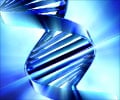Small cell lung cancer has been seen to be vulnerable to an agent that disables part of tumor cells' basic survival machinery, report researchers.

"Small cell lung cancer is a disease for which new treatments are desperately needed," said Kwok-Kin Wong, MD, PhD, co-senior author of the study and medical oncologist at Dana-Farber. "Patients generally respond well to initial chemotherapy, but the disease almost always returns. Less than 5 percent of patients are alive five years after being diagnosed with the disease." Small cell lung cancer (SCLC) accounts for 10-15 percent of lung cancer cases and is the most aggressive form of lung malignancy.
Although small cell lung tumors have many mutated genes, none of these is known to be a "driver" - a gene that actually spurs tumor growth - and none makes a good target for drug therapy. As a result, researchers have sought other strategies for attacking the disease. Dana-Farber researchers began with mice that had small cell lung tumors engineered to resemble those in humans.
Extracting tumor tissue from the animals, the researchers screened more than 1,000 small molecule blockers in the cell samples to see if any halted tumor cell growth. The one that worked best was THZ1, a compound designed by chemical biologists at Dana-Farber that inhibits a cell protein known as cyclin-dependent kinase 7 (CDK7). CDK7 is known to play a key role in gene transcription, the process by which genetic information stored in DNA is copied onto RNA.
Inhibiting CDK7, therefore, strikes at the basic machinery of transcription. But since transcription occurs in all cells, researchers explored why THZ1 is effective at killing SCLC cells but left healthy cells unharmed. The answer lies in sections of genetic material known as super-enhancers, long stretches of DNA that exert extensive control over transcription in tumor cells. The researchers found that THZ1 suppresses certain genes within these regions that SCLC cells depend on to survive and grow.
Because normal cells do not rely on super-enhancers to the same degree, they are largely unaffected by THZ1. "We found that SCLC cells are 'addicted' to transcription in a way that normal cells are not," Wong observed. "They appear to depend on short-lived transcripts - briefly existing RNA copies - that aren't as critical to normal cells. This explains why normal cells can tolerate a drug that targets the basic transcription mechanism while SCLC cells cannot."
Advertisement
Source-Eurekalert












